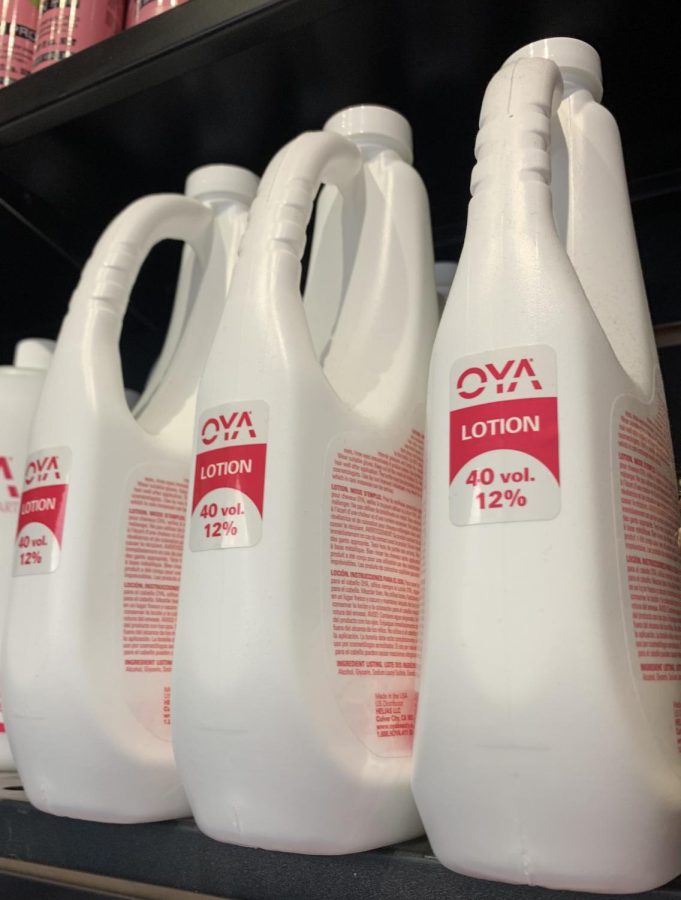Hair dye: behind the label
March 30, 2023
The appointment book is filling up and the lines are only getting longer. What could be causing all this demand? Women who want to dye their hair and change their appearance for better or for worse. But oh the significant damage this may cause the hair.
According to research done by Deven Hopp of Byrdie “Since 1500 B.C. the Egyptians would use henna to cover up gray hair. Dying hair has only progressed through the years, taking off in 1907 when Eugene Schueller created the first chemical dye for commercial purposes. He called it Aureole. It would later be called its current name L’Oréal”. Hair dying dates back years beyond the modern day. The evolution of hair dye has grown drastically.
From local business Eclectic Color in Joliet, Illinois OYA hair dye and hair care company are of greater use. Chemicals in OYA have been reviewed by Joshua Hardie, a chemistry teacher at Plainfield North high school. “Chemicals commonly found in hair dyes that are banned by the European Commission, which would be alarming to see in American Products, 6-Methoxy-2 ,3-Pyridinediamine and HCl salt, 6-Bis(2-Hydroxyethoxy)-3” said Hardie.
The process of hair dying can be harmful to the scalp and cause damage to the hair’s growth and texture. “I have seen more breakage in my hair specifically at the top af where my hair part is, my hair has more dead ends now.” said Senior Molly Dalton. The process of dying hair is a harmful process to the hair’s natural follicles according to Medical News Today.
When thinking of processing hair with harmful chemicals not only does this harm the scalp and natural hair, but the cost. “ The process can be very expensive for dying your hair, ” said Sophomore Paige Davis. The price for dying hair has increased by 37% in the last two years. Women on average spend somewhere between $150-$600 a year on dying their hair, according to Byride. “Dying your hair can be very expensive,” Dalton said.
Women across America do not see the complications of processing hair. Many hairdressers refer to hair that has never been bleached or dyed as “virgin hair” according to Byride. Virgin hair is hardest and most harmful when being dyed. According to Nancy McBride, a highschool chemistry teacher,“the chemical that damages hair is ammonia, which is irritating to breathe and harmful to your eyes if you get it in your eyes. The use of hydrogen peroxide, which is needed to remove the color from the hair shaft, ends up drying hair out, making it weak and brittle.” These are the effects not many women begin to think of when processing their hair.
When the thought of processing hair and bleaching, dying, or even some highlights the damaging effects to the hair specifically come to mind. But the damage to the scalp area and even sometimes the brain and eyes. “The bleach in most hair dyes contains combinations of harsh chemicals that can harm the scalp. The most common side effect/injury is chemical scalp burn” said Hardie. Women throughout the world have experienced scalp burn from a minor level to third degree burns.
Information gathered from a survey taken by 268 North students, 48 percent reported dying their hair at least once. 76 percent of the students reported hair damage and brittleness within their hair. “Dying my hair has definitely damaged my hair more than it was naturally” said Davis.
“Many permanent and semi-permanent hair dyes contain a chemical called paraphenylenediamine (PPD). Which is a known allergen and irritant. Darker colored hair dyes contain higher levels of PPD. PPD’s are the cause of most of the reactions to hair dye,” Hardie said. These chemicals can be not only damaging but very dangerous. Products that are used in the US are banned in places like Europe.







